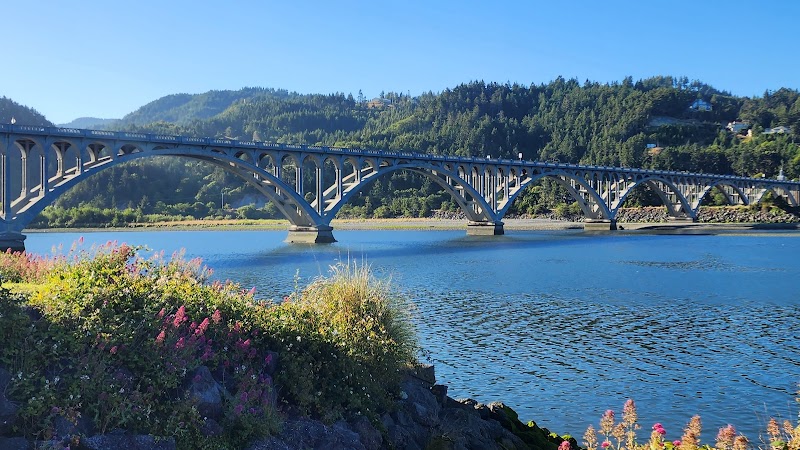
Chasing Giants: Whale Watch Week in Port Orford, Oregon
Whale Watch Week in Port Orford, Oregon offers a thrilling window into the gray whales' annual coastal migration. Combining accessible hikes with spectacular marine wildlife viewing, it’s the perfect blend of outdoor adventure and natural wonder for travelers of all levels.
Bring Layered Clothing
Coastal weather during Whale Watch Week is unpredictable and cold. Dressing in layers helps you adapt to changing winds and fog without overheating or getting chilled.
Use Sturdy Footwear
Trails around Port Orford’s whale-watching sites include uneven, rocky, and root-strewn terrain. Comfortable, supportive hiking shoes improve stability and prevent injury.
Pack Binoculars and Cameras
Whale sightings can be subtle and far off. Binoculars enhance the viewing experience, while a camera with zoom captures fleeting moments of breaches or tail slaps.
Start Early in the Day
Morning hours typically offer calmer seas and better visibility, increasing your chances of spotting whales and enjoying unobstructed views from the cliffs.
Chasing Giants: Whale Watch Week in Port Orford, Oregon
Each February, Port Orford, Oregon, becomes a frontline observation post for one of nature’s most dramatic displays: the migration of gray whales. Whale Watch Week offers a rare, up-close engagement with these ocean titans as they surge along the rugged coastline, their spouts punctuating the horizon like heralds daring you to witness their power. This event invites both casual visitors and seasoned outdoor enthusiasts to immerse themselves in the brisk coastal wind, forests murmuring behind, and endless waves crashing with intent.
The best vantage points are found along the Cape Blanco area and Port Orford Heads State Park, where forested trails lead you to cliffs rising 300 feet above the Pacific’s restless pulse. Trails here cover moderate distances—expect roughly 2 to 4 miles round trip with some elevation gain up to 400 feet on uneven coastal terrain. Underfoot, weathered roots and occasional rocky patches demand solid hiking shoes, while salt-kissed breezes push forward against your stride.
Timing your visit is crucial: mid-February to early March marks the peak of southbound migration. Early mornings maximize calm seas and clearer skies, heightening chances of spotting bulls, cows, and mother calves moving in pod-like clusters. Hydrating and layering clothing against cold ocean air are practical steps to stay comfortable during these multi-hour watches.
Whale Watch Week is more than watching; it’s a dialogue with a fiercely alive coastline. Eagles circle above in slow arcs, harbor seals sun themselves on hidden rocks, and the wind carries the salty stories of the sea. Guided walks and local experts enrich this experience by sharing the whales’ migratory habits and the coastal ecosystem’s delicate balance.
Practically, prepare for variable weather. Waterproof jackets and windbreakers shield against fog and gusts that can shift unexpectedly. Carry binoculars to catch the subtle breach or tail slap signaling the whale's presence. Portable folding chairs or mats help during long waits, as the whales maintain their steady pace undeterred by human attention.
Whale Watch Week in Port Orford is an invitation to respect a passage that is fiercely itself—a journey not to control but to witness. Whether you come for a brisk hike into coastal wilds or hours of patient observation, the spectacle unspools a living connection between ocean and land. This is adventure sharpened by the practical, punctuated with moments of awe, and grounded in the rhythms of an enduring migration.
Nearby Trips
All Adventures
Boat Charters
Water Activities
Adventures near Port Orford, OR
Discover the unique and memorable adventures that make Port Orford, OR special.
Frequently Asked Questions
What is Whale Watch Week?
Whale Watch Week is an annual event in Port Orford, Oregon, aligning with the peak gray whale migration southward along the coast, typically in February. Visitors gather to observe whales moving close to shore.
Where are the best whale-watching spots in Port Orford?
The Cape Blanco area and Port Orford Heads State Park offer cliffside trails with unobstructed ocean views, ideal for spotting migrating whales.
Is the hike suitable for families or casual hikers?
Yes. Trails range from 2 to 4 miles round trip with moderate elevation gain and are manageable for families and casual hikers with proper footwear and preparation.
What wildlife can I expect to see besides whales?
Along the coast, expect bald eagles soaring overhead, harbor seals hauled out on rocks, and seabirds like cormorants and gulls actively fishing.
Are guided tours available during Whale Watch Week?
Local organizations and park services often host guided walks with experts sharing insights about whale behavior, migration patterns, and coastal ecology.
What should I bring for a whale-watching hike?
Bring layered clothing, waterproof jacket, sturdy hiking boots, binoculars, a hydration pack, and a camera. Prepare for cold, windy conditions and possibly wet trails.
Recommended Gear
Waterproof Jacket
Protects against rain and wind, vital for staying dry during cold coastal conditions.
Hiking Boots
Supports ankles and grips slippery terrain, crucial for stability on rocky, root-filled trails.
Binoculars
Enhances whale watching at a distance, letting you spot subtle movements in the ocean.
Hydration Pack
Keeps water accessible on the trail, helping you stay hydrated during multi-hour outings.
Local Insights
Hidden Gems
- "Stormy Point at Cape Blanco for panoramic views away from main crowds"
- "The secluded trail to Mill Rocks, where seals often sunbathe undisturbed"
Wildlife
- "Gray whales passing in close proximity during migration"
- "Bald eagles nesting in nearby old-growth trees"
- "Harbor seals and sea lions lounging on offshore rocks"
History
"Port Orford is the oldest town on the Oregon coast, with a rich fishing and maritime history. Whale Watch Week connects back to local traditions of respect and observation of the marine ecosystem, echoing practices of indigenous peoples and settlers alike."
